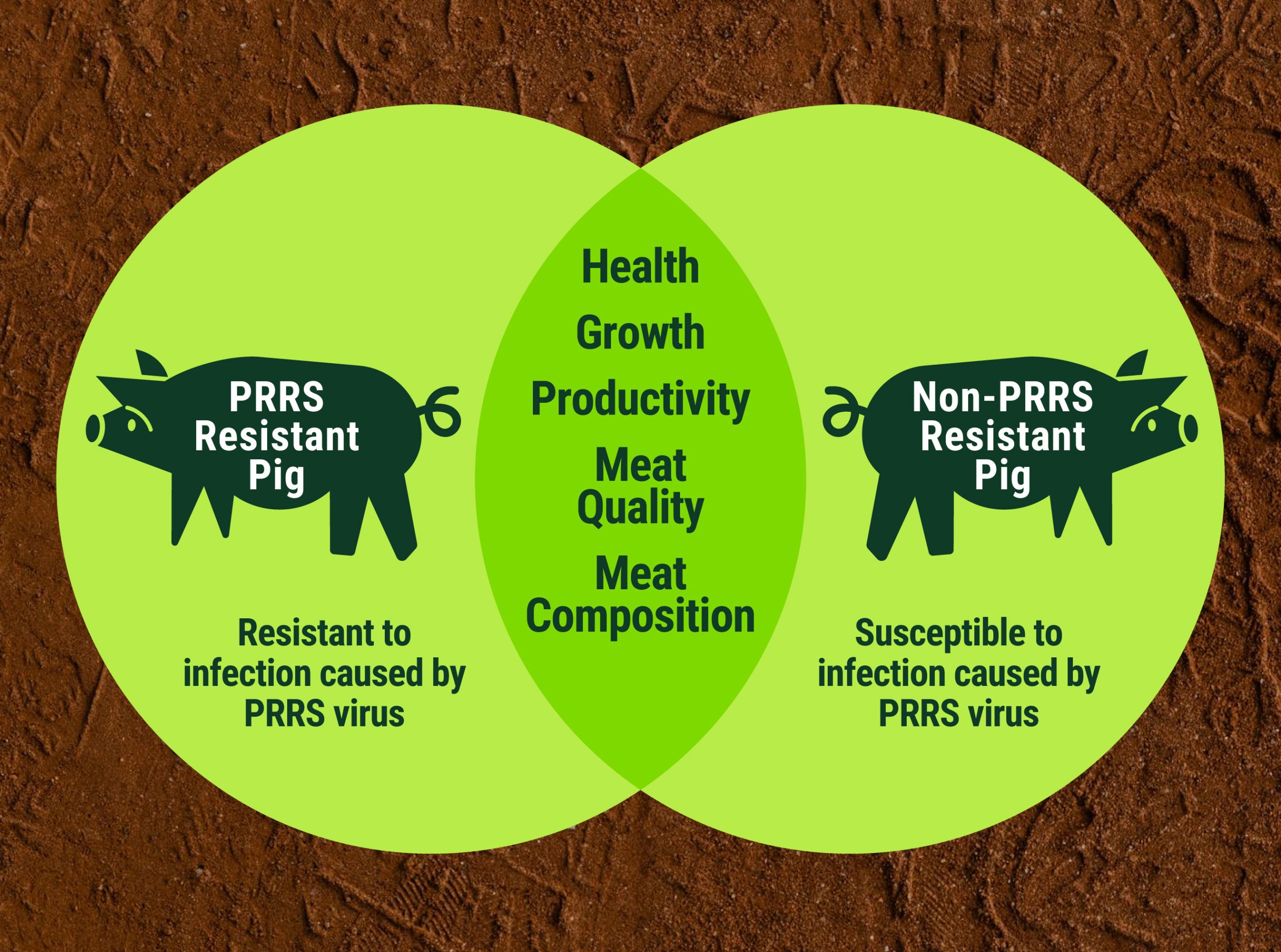A recent Frontiers in Genome Editing study reviewed 97 meat quality and meat composition data points and found no statistically significant differences between the PRRS-resistant and non-resistant pigs, except for resistance to the PRRS virus.
Plus, removing PRRS could lead to a reduced environmental impact by decreasing land and water use and GHG emissions.



PRRS was first identified in the mid-1980s, and despite increased biosecurity on farms, vaccines and antibiotic use, the problem has only grown. It’s clear that we are in need of a solution so that pigs live healthier lives.
That’s where the PRRS-Resistant Pig comes in.
For the first time ever, we have an absolute solution to a devastating problem.
PIC partnered with researchers at the University of Missouri to develop a gene edit, which removes the binding site for PRRS in pigs’ DNA.
Without the binding site, PRRS cannot infect pigs, making them completely resistant to the disease and improving their health and welfare.
“I’ve been doing this for going on 30 years now, and more than half a dozen times in my career we’ve thought we had things figured out and were on top of it. But this virus always finds a way. It outsmarts us every time.”
Dr. Derald Holtkamp, professor of veterinary diagnostic and production animal medicine, Iowa State University